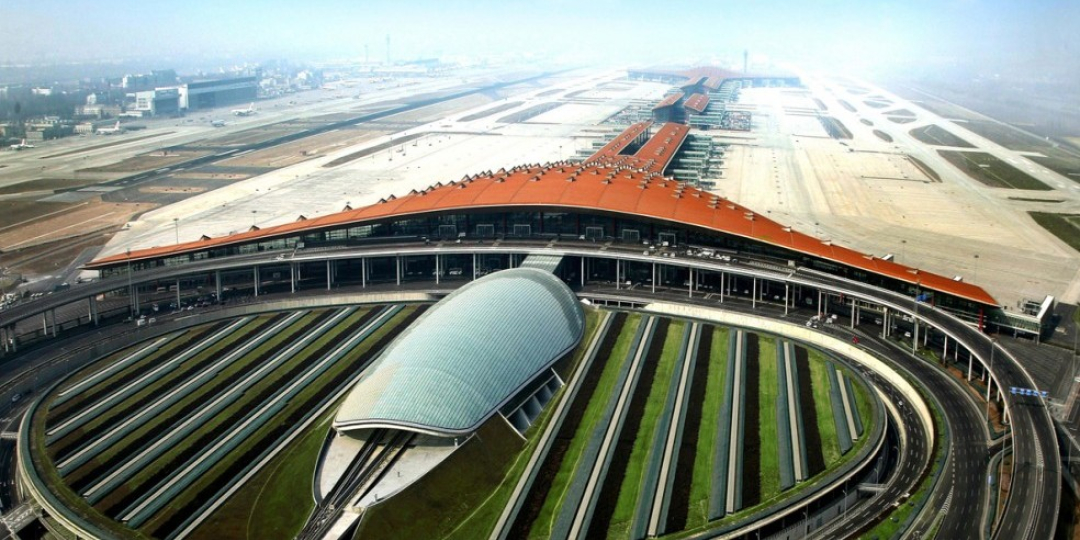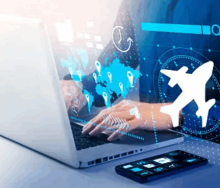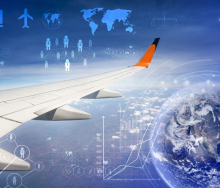With global air travel poised to reach nearly eight billion annual passengers by 2043, airports worldwide face a monumental challenge: how to double passenger throughput without doubling physical space.
According to a new white paper from airport and airline technology provider SITA, the answer lies in a digital transformation that will redefine the very concept of an airport.
The tech and robotics takeover
The white paper, “Airports of the Future”, outlines a comprehensive vision for a digitally interconnected, highly automated airport ecosystem.
According to SITA, the future airport is not simply a transit hub; it is a smart environment that leverages artificial intelligence (AI), biometrics, robotics and big data to streamline operations and elevate the passenger experience.
Already 74% of airports expect to implement biometric self-boarding gates by 2027 with 75% forecasting biometric-enabled check-in processes. Some 43% of airports say they have already installed biometrically enabled self-boarding gates using facial recognition technology to verify passenger identities quickly and securely.
Robotics and automation are also revolutionising airport operations, driving significant improvements in efficiency and cost-effectiveness.
By leveraging robotic systems for tasks such as baggage handling, cleaning and security patrols, airports can streamline operations while reducing reliance on human labour.
This shift enhances productivity and allows staff to focus on higher-value activities requiring human judgment and interaction. The deployment of autonomous systems is particularly beneficial in high-volume areas where speed and accuracy are paramount.
For instance, robotic baggage handlers can significantly reduce turnaround times by ensuring swift transportation of luggage between terminals and aircraft.
Airports also dedicate around 6% of their annual revenues to IT, channelling funds into AI-driven predictive maintenance, autonomous vehicles and total airport management systems.
Yet this transformation is not without challenges. Cybersecurity remains a top concern with 40% of airports ranking it as their number one IT priority.
There is also the issue of digital equity – smaller airports and developing regions must be included to avoid a two-tier global travel system.
Full connectivity
Airports are already well-connected places with advanced fixed and mobile networks but the next decade will see a huge increase in advanced connectivity, which will deliver a highly integrated, intelligent ecosystem.
The deployment of 5G networks supports high-speed communication between devices, enabling seamless connectivity for passengers, devices and operational systems.
“We will also see much more connectivity airside with advanced Wi-Fi and the move towards 6G,” SITA says.
Airports that think for themselves
Imagine arriving at an airport where AI predicts and allocates resources in real time from gate assignments to washroom cleaning. Where autonomous baggage carts and self-service kiosks handle luggage, and passengers’ identity is verified by a quick facial scan instead of a paper passport.
This scenario is not far off. At airports like Beijing Capital International and Orlando International, SITA’s Smart Path technology already enables fully biometric journeys, reducing boarding times by 30%.
In India, SITA is working in collaboration with the Airports Authority of India to cloud-enable 44 airports across the country. This is the largest airport cloud-enabled platform in the world and more than 3 500 self-service touchpoints will be enabled.
Sustainability
Sustainability is another critical focus for airports worldwide, driven by increasing environmental concerns, regulatory pressures and stakeholder expectations.
Airports are already leveraging AI and advanced technologies to reduce their carbon footprints across all emission scopes. Airports Council International has adopted a goal for member airports worldwide to achieve net-zero carbon by 2050.
Airports are already beginning to invest in the necessary infrastructure to facilitate sustainable aircraft fuel (SAF) and other alternate fuel solutions.
For net-zero success by 2050, however, it will very much require the coordinated efforts of the entire industry, SITA says.
For now, progress is still slow with SAF much more expensive than traditional fuel and not enough being produced. Energy companies, for their part, are reluctant to invest in more production until there are long-term orders.
Off-airport and urban air mobility
Passengers see value in off-airport baggage collection and drop-off services, and airports are investing in technologies that can help make this happen.
Simple, connected ways to check-in baggage from train stations, hotels or malls save passengers time, smooth their journeys and help reduce terminal congestion.
Urban air mobility potentially offers solutions to increasing urban congestion using small, electric vertical take-off and landing (eVTOL) aircraft.
If and when it becomes a reality, allowing people or goods to be transported within urban areas, it will have an important effect on how airports operate.
It could, in theory, revolutionise the way that baggage and cargo delivery is managed, SITA says.
Archer Aviation is already making waves in the aviation industry with its eVTOL aircraft, Midnight, having committed to launch air taxi networks in San Francisco, Los Angeles, New York City and Ethiopia.














